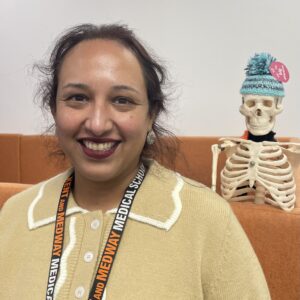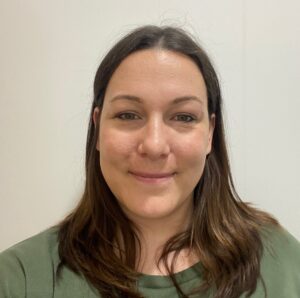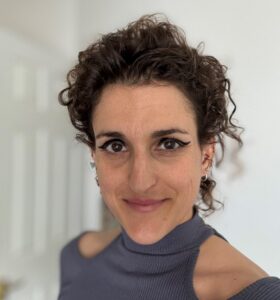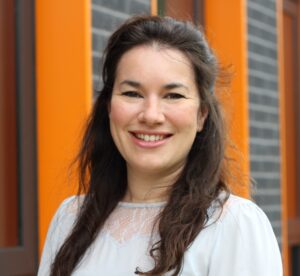
The International Day of Women and Girls in Science, celebrated on 11th February, is dedicated to recognising the vital contributions of women and girls in the fields of science, technology, engineering, and mathematics (STEM). To mark the occasion, we hear from a few inspiring women within the KMMS community as they share insights into how their journeys in science began, what inspired them to pursue careers in this field, and what they enjoy most about their work.
Jinelle Ramlackhansingh, Senior Lecturer in Public Health and Public Health Clinician at KMMS shares her insights on overcoming challenges as inspiration for her medical career.

‘Love what you do’
“The body is a wonderful machine. Pursuing a career in medicine was the right choice for me. Medicine can be challenging, with extensive learning and demanding hours during clinical training. My clinical background is in Paediatrics. I will never forget the heartfelt thanks I received from parents when I listened to their concerns and started appropriate care for their children.”
“You need to love what you do. If you don’t enjoy the subject, you won’t thrive or succeed. There will be challenges but try to reframe these as ‘opportunities not yet realised’. Seize these opportunities. Reflect on your achievements and consider how much more you can accomplish. My grandparents were part of the Windrush generation in England, and thinking about the difficulties they faced to build a life here gives me the strength to succeed.”
“I moved from Canada, where I completed my PhD research. My PhD was an ethnography examining professional identity development in pre-clinical medical students, which demonstrates how an active hidden curriculum shapes professional identity. The importance of physician role models displaying ‘acts of magic’ was highlighted. Currently, my work in Public Health at Medway Council involves marginalised populations and understanding their experiences accessing healthcare. At KMMS, all research projects I am involved in focus on students’ experiences and learning.”
Dr Melissa Jones, Head of Anatomy at KMMS, has dedicated her career to studying the human body and is passionate about sharing her knowledge with students.

‘It’s never too late to find your passion’
“I didn’t take science in high school. It wasn’t until university that I fell in love with human anatomy. The complexity and precision of the human body fascinated me, and that passion led me to pursue a career in science.”
“I’d say it’s never too late to find your passion. Once I discovered what I loved, I went for it. If you’re curious about science, explore it – ask questions, try new things, and don’t be afraid to take a different path than expected.”
“One of the most incredible experiences has been learning through cadaveric dissection. Seeing the human body firsthand gave me a deep appreciation for its complexity and reinforced my passion for anatomy.”
Olivia France, Lecturer in Anatomy at KMMS, shares how childhood visits to The Science Museum in London inspired her love of science and led to an exciting career in the field.

‘Don’t give up’
“I have always had a great interest in science since I was very young. The first book I bought for myself was about black holes, and I often asked for chemistry kits as birthday presents. The Science Museum in London was one of my favourite places to visit on special occasions. At secondary school, I remained highly interested in the sciences and studied them during my A-levels. It was in sixth form that I gained work experience in a GP practice and a hospital, which made me decide to pursue medicine because of its unique blend of scientific knowledge and the care of others. At medical school, I was fascinated by the study of human anatomy and its practical application in surgery. I also found that teaching my peers was hugely rewarding, constantly stimulating, and engaging. Unfortunately, I had to step away from medicine due to family illness, but that allowed me to redirect my career pathway toward higher education. I then pursued a career as an anatomy academic, and after completing a second MSc degree, I entered the world of medical education.”
“I would encourage women to engage with science whenever the opportunity arises, but also to find and create those opportunities by talking to and reaching out to other women in the field who can offer insight and support. Even if you don’t find a clear path into your chosen field, that doesn’t mean you can’t forge another one, or that you won’t end up at an even better endpoint. My path led me to a very different career than I initially thought I would pursue; however, it was through those challenging circumstances that I found what I was best suited for and enjoyed the most, which was anatomical education. So, even if setbacks seem impossible to overcome, don’t give up.”
“The diversity in the work is what I enjoy most. My days look different every week. One day, I might be engaged in practical teaching in the dissection room, and on another day I could be writing lectures to deliver to whole cohorts. I might spend my mornings writing exam questions, and later, I may participate in meetings focused on equity, diversity, and inclusion. My duties are very broad and varied, which I love because I am constantly intellectually stimulated and enjoy each new task. I also find engaging with students very rewarding. While it does come with challenges, most of the time it is very refreshing and uplifting as I am helping our future doctors achieve their goals of pursuing a career in medicine. It is wonderful when they have those ‘light bulb moments’ when they finally understand a concept that has previously been evasive.”
Dr Anna Romito, Programme Director, Deputy Dean for Undergraduate Medical Education at KMMS tells us about her experiences that led to a passion for helping others.

‘We must recognise how amazing our bodies are and the world we live in’
“Around the age of eight, I became fascinated by questions that I couldn’t easily answer, such as why we had eyebrows above our eyes but not below. Later, when my hamster gave birth to a litter, one of which was born with a disability, it reinforced my desire to use science for good and become a vet. A few years later, as I supported my grandmother with dementia, I became intrigued by people’s life stories. It made perfect sense to fulfil my interest in exploring how we work in order to help people.”
On how she would encourage other girls to pursue science at school she explained: “We must recognise how amazing our bodies are and the world we live in. By learning about how miraculously strong and capable women are, we can ask ourselves what makes this possible. By seeing the satisfaction of women working in science and in wanting to uncover the answers to the everyday questions we have, such as how our body turns a cornflake into energy!”
Dr Romito also shared her favourite science fact: “Strawberries are not true berries. They are made up of multiple tiny fruits – but this doesn’t count more towards your 5-a-day!”
Dr Katie Cartledge, Senior Lecturer at KMMS shares her passion for biology and the human body.

‘I often reflect on the women who fought for women’s rights in the early 20th century, paving the way for women like me to enter medicine.’
“I’ve always loved biology, particularly discovering how and why the human body works. I find it endlessly fascinating because there is still so much to discover and understand; so it is a topic that never gets dull! From a very young age, I knew I wanted to be a medic, despite coming from a family with no doctors. It sounded like such an interesting vocation – to be able to make a difference to people’s lives and do a job that would always be engaging.”
“There were several female medics who inspired me on my journey at a time when the medical field was predominantly male. I often reflect on the women who fought for women’s rights in the early 20th century, paving the way for women like me to enter medicine. I would encourage women who are interested in science to go for it: you have a lot to offer the field, and the world needs female scientists. There has been a significant lack of research into women’s health for far too long, and that tide needs to turn. It will only change if women begin to pick up the baton of research and education, and if funders start to recognise our voices as equally strong as those of men.”
“I’m very lucky in that I get to work in two jobs I love: as a GP and as a lecturer. This combination brings so much variety to my days and weeks. As an educator, the most rewarding part of my job is seeing students feeling inspired or enlightened by something I have taught them.”
Learn more about International Day of Women and Girls in Science on 11th February. This year’s celebration, which marks the 10th anniversary of this International Day, focuses on Unpacking STEM Careers: Her Voice in Science.